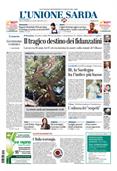Two portions of sushi for less than one euro: Japan says goodbye to the "golden rule"
After decades, Japanese kaiten restaurants forced to announce price increases, due to the increase in the prices of raw materials, also due to the war in UkraineSushi (Unsplash)
Per restare aggiornato entra nel nostro canale Whatsapp
A saucer with two portions of sushi for 100 yen (just under one euro).
What has represented a standard offer in Japan for decades in thousands of "Kaiten" restaurants , where the dishes already prepared pass on a conveyor belt ready to be grabbed by customers, risks becoming just a memory .
The growth in fish consumption globally, the depreciation of the yen and the criticalities caused by the war in Ukraine are forcing the large Japanese sushi chains to raise consumer prices to absorb the rise in supply costs.
As reported by the online newspaper Yomiuri Shimbun, the locals are now struggling to guarantee the 100 yen portion , cornerstone of the guiding principle "quality at affordable prices".
Suffice it to say that one of the main chains present in Japan, Sushiro , has already announced that it will be forced to abolish the 100 yen offer at the end of September for the first time since 1984 , by applying a surcharge of 20 yen on the saucer it generally contains. , in fact, two portions of fish with rice assembled by the "itamae", the chef specialized in the various compositions.
The group imports much of the fish it offers in its restaurants, and the sudden devaluation of the yen , at its lowest in 20 years against the dollar, has been affecting the group's margins for months now.
The same goes for the Genrokuzushi chain, the first to have introduced the concept of Kaiten-sushi in Japan, and which has already applied a surcharge since 10 May .
Another aspect that has significantly affected the increase in prices is the difficulty in finding high-end fish , including king crab and sea urchins, two varieties that come respectively 90% and 50% from Russia , as well as salmon roe produced in Northern Europe - whose air links with Japan have been lengthened due to the ongoing war in Ukraine.
In 2021, Japan imported marine products from Moscow for a total of 138 billion yen (1.10 billion euros) , behind China and Chile, with 80% of supplies made up of red salmon. Operators fear that prolonged logistical anomalies could lead to short-term fish supply shortages, and further increases in seafood prices.
(Unioneonline / lf)
